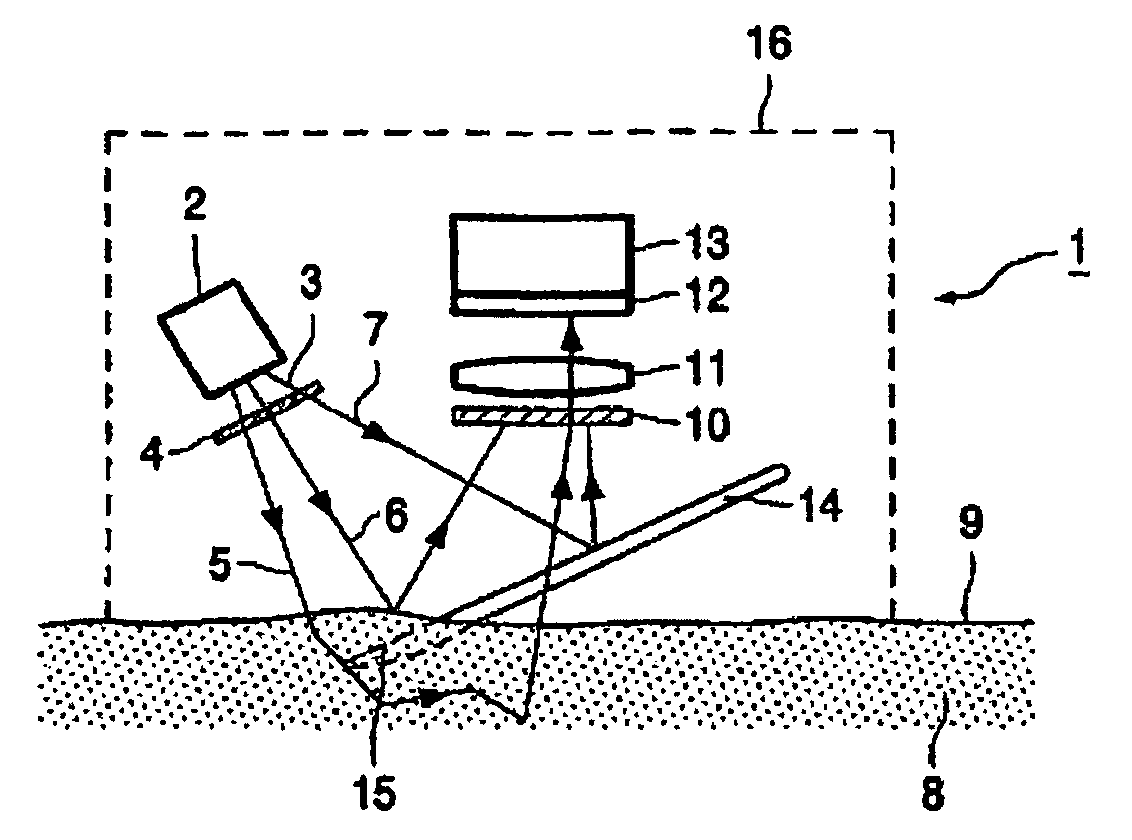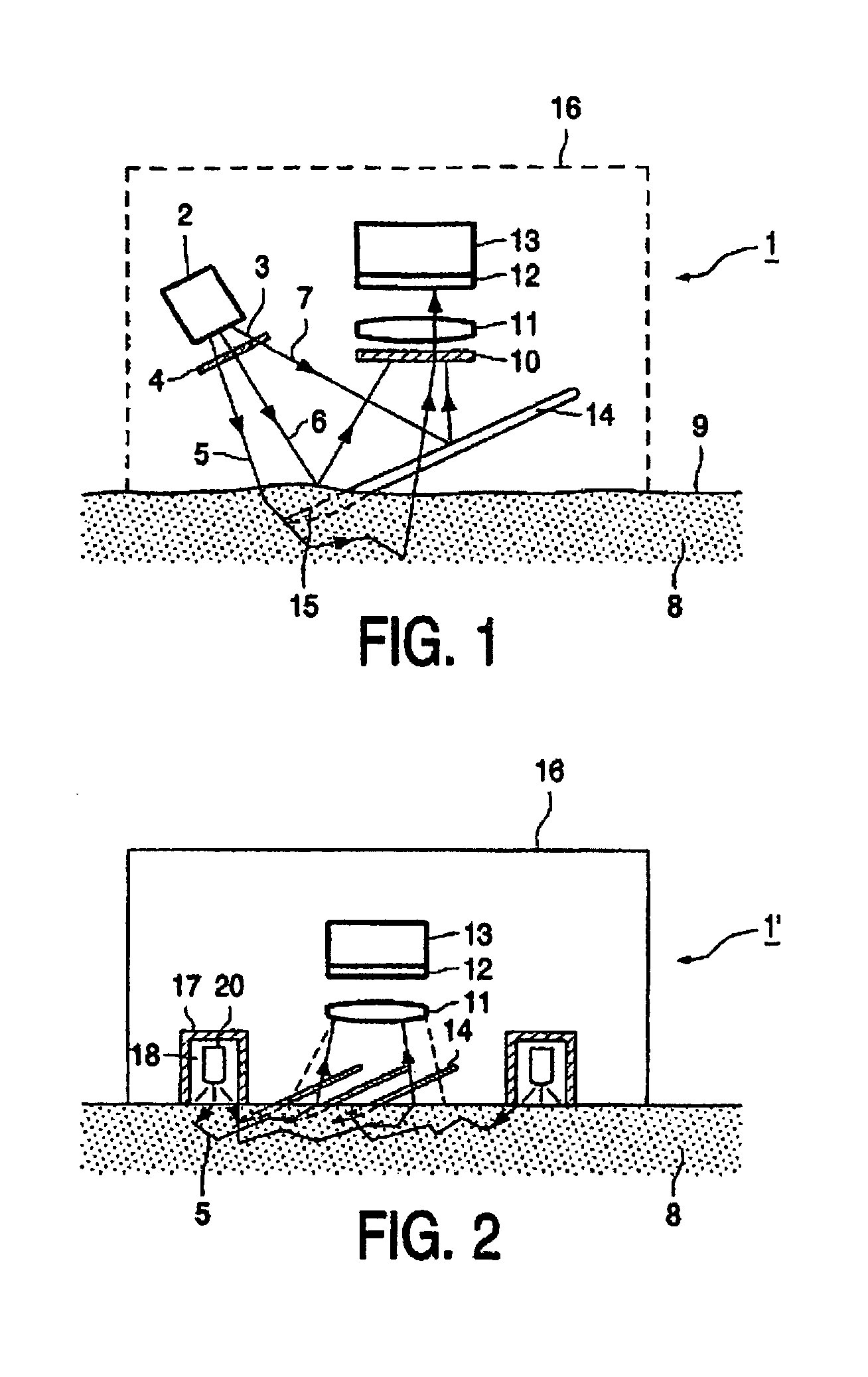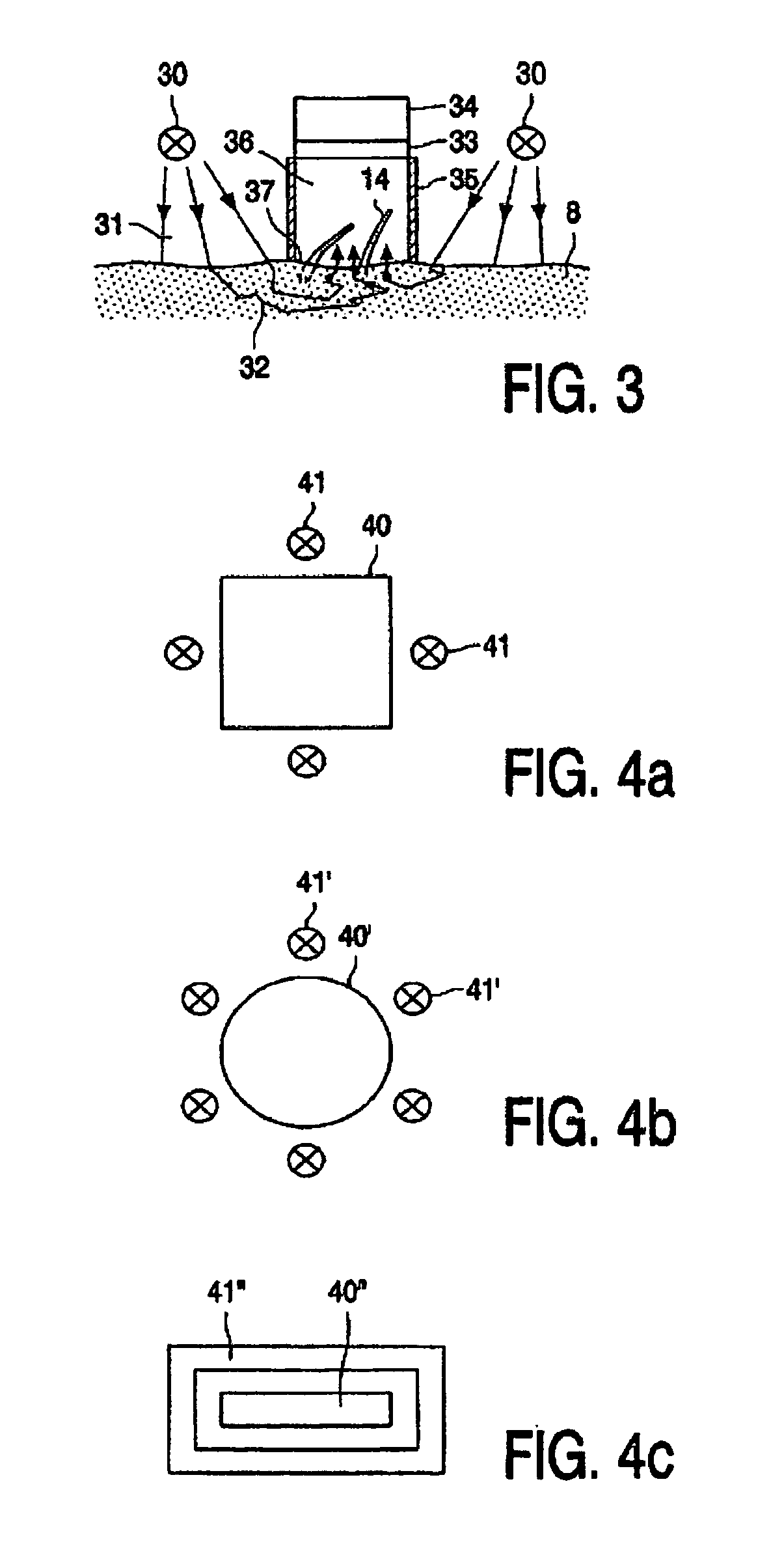Hair detection device
a detection device and hair technology, applied in the field of hair detection devices, can solve problems such as difficulty in detecting hairs in certain circumstances
- Summary
- Abstract
- Description
- Claims
- Application Information
AI Technical Summary
Benefits of technology
Problems solved by technology
Method used
Image
Examples
first embodiment
[0052]FIG. 1 diagrammatically shows a hair-detecting device 1 according to the invention. Herein, 2 is a source of radiation, emitting a beam 3 of radiation. A first polarizer is denoted by 4. Three rays 5, 6, 7 are shown to pass the polarizer 4. Reference numeral 8 denotes a skin having a surface 9. A second polarizer is denoted by 10. Reference numeral 11 denotes an optical system, 12 a CCD imaging sensor and 13 denotes a control unit. Reference numeral 14 denotes a hair, having a subcutaneous part 15. An optional box or housing is denoted by 16.
[0053]In the hair-detecting device 1, a source 2 emits a bundle 3 of radiation. The radiation 3 preferably comprises radiation in a wavelength range from 700 nm to about 2000 nm, more preferably between about 700 nm and 1100 nm, most preferably about 800 nm.
[0054]A first polarizer 4 is positioned in the beam 3. Radiation from beam 3 will have a direction of polarization after having passed the first polarizer 4. A first ray 5 enters the sk...
second embodiment
[0058]FIG. 2 diagrammatically shows a hair-detecting device 1′ according to the invention. Herein, similar parts are denoted by the same reference numerals.
[0059]This device 1′ comprises a box 16 provided with 2 recesses 18 with a wall 17. In the recess 18, a source 20 of radiation is accommodated. The source 20 emits rays 5 of radiation, which in operation enter the skin 8 and are scattered therein. After leaving the skin 8, the rays 5 travel through an imaging optics 11 towards an imaging sensor 12, which is coupled to a control unit 13. All parts mentioned are accommodated in a housing 16 having an open side which in operation of the hair-detecting device faces towards the skin 8.
[0060]An advantage of this embodiment is that only radiation which actually enters the skin, i.e. passes the epidermis, will be used in the imaging process. Hence, in principal, any light source may be used that emits in the useful range of radiation. Of course, it will be preferred to have a relatively ...
third embodiment
[0065]FIG. 3 diagrammatically shows a hair-detecting device according to the invention. Herein, 30 denotes a source of radiation 31. Rays 32 of said radiation 31 enter the skin 8 and are scattered therein. Re-emitted radiation will travel towards imaging sensor 33, which may be connected to a control unit 34.
[0066]Said radiation is contained within the chamber 36 which is surrounded by an opaque wall 35 and has an opening 37. On the skin 8, hairs 14 are present.
[0067]A feature of this embodiment of the hair-detecting device according to the invention is that only radiation which has traveled through the skin 8 may reach the imaging sensor 33. Hence it is not necessary to contain the radiation 31 emitted by the sources 30. In fact, any ambient light which would add to the useful radiation may be advantageous in the present embodiment. Omitting any type of housing for the sources 30 may be advantageous in respect of improved cooling possibilities.
[0068]The source 30 may again be any t...
PUM
| Property | Measurement | Unit |
|---|---|---|
| wavelength range | aaaaa | aaaaa |
| wavelength range | aaaaa | aaaaa |
| wavelength range | aaaaa | aaaaa |
Abstract
Description
Claims
Application Information
 Login to View More
Login to View More - R&D
- Intellectual Property
- Life Sciences
- Materials
- Tech Scout
- Unparalleled Data Quality
- Higher Quality Content
- 60% Fewer Hallucinations
Browse by: Latest US Patents, China's latest patents, Technical Efficacy Thesaurus, Application Domain, Technology Topic, Popular Technical Reports.
© 2025 PatSnap. All rights reserved.Legal|Privacy policy|Modern Slavery Act Transparency Statement|Sitemap|About US| Contact US: help@patsnap.com



